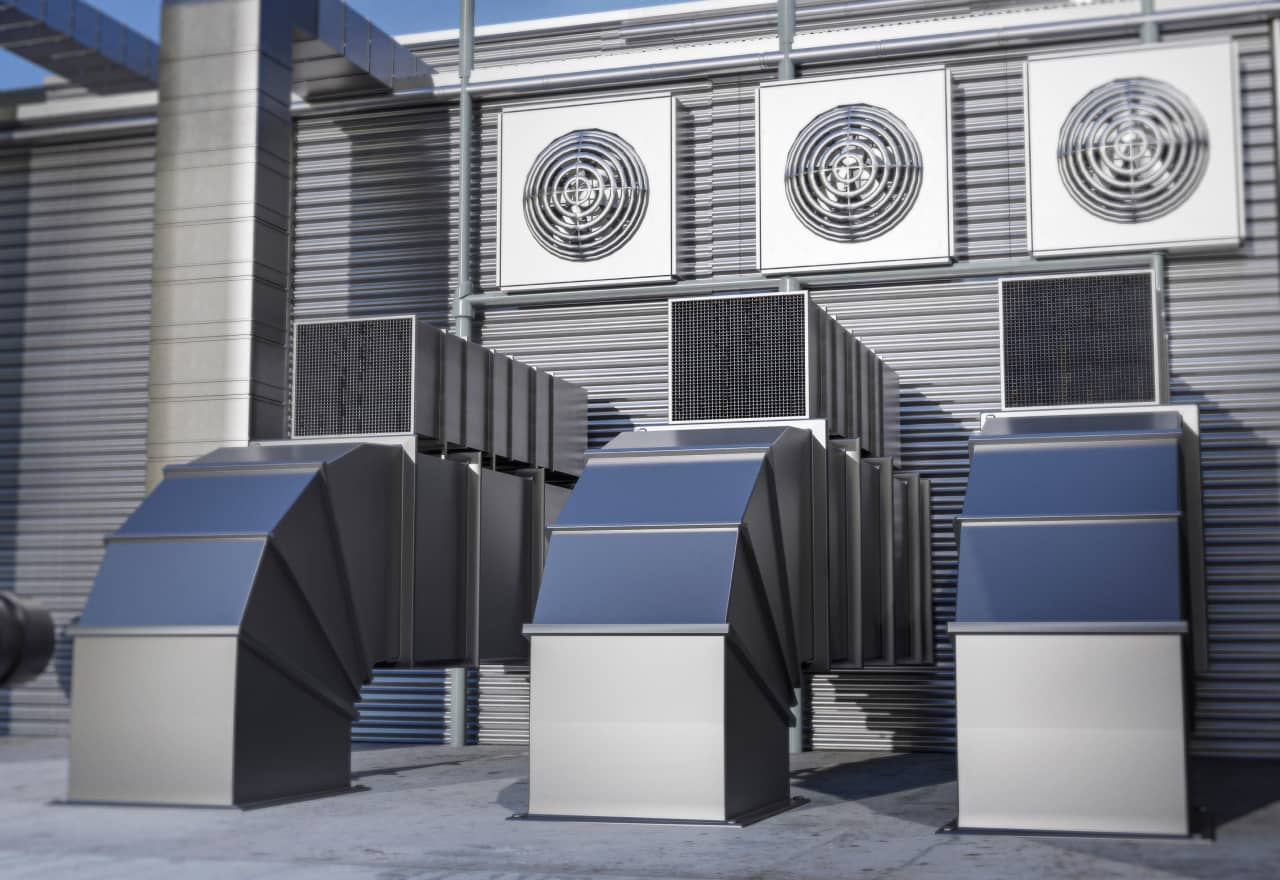Selecting the ideal HVAC system for your home is more than just a matter of convenience—it’s a critical factor in ensuring comfort, energy efficiency, and cost savings. An oversized unit might cool or heat your space quickly but will lead to excessive energy consumption and uneven temperatures. On the other hand, an undersized system will struggle to meet your needs, running continuously and wearing out prematurely.
In this guide, we’ll explore the importance of HVAC sizing, the factors that influence the right choice, and how to ensure your system is tailored to your home’s specific requirements. Whether you’re building a new home or upgrading your existing setup, understanding how to size your HVAC system properly is the key to year-round comfort and long-term savings. Let’s dive in!
Why HVAC System Size Matters
Choosing the correct size for your HVAC system is crucial because it directly impacts your home’s comfort and energy efficiency. An oversized system might seem like a good idea, but it often leads to short cycling, where the system turns on and off frequently. This not only wears down the components faster but also causes uneven temperature distribution across your home. On the flip side, an undersized system will run continuously, struggling to meet your heating or cooling demands, resulting in high energy bills and premature wear.
Moreover, the size of your HVAC system affects the air quality and humidity control within your home. Properly sized units ensure balanced airflow and effective dehumidification, creating a healthier and more comfortable environment. Investing the time to understand why size matters will save you from unnecessary expenses, inefficiencies, and frustration down the road.
Understanding HVAC Load Calculation
An HVAC load calculation is a scientific approach to determining the size of the system your home needs. This process takes into account various factors such as your home’s square footage, insulation levels, number of windows, and even the direction your house faces. Known as a Manual J calculation, this detailed assessment ensures your HVAC system is tailored to your specific requirements rather than relying on generic estimates.
Skipping or undervaluing a load calculation can lead to suboptimal results. For instance, relying solely on square footage might not account for energy losses through windows or poorly insulated walls. A professional contractor uses advanced tools and calculations to provide an accurate assessment, ensuring your HVAC system operates efficiently and meets your comfort needs.
Factors That Influence HVAC Sizing
Several factors come into play when determining the size of your HVAC system. The climate in your area is a significant consideration, as homes in colder regions require more heating capacity, while those in warmer climates demand greater cooling output. Additionally, the design and construction of your home, including ceiling height, number of rooms, and type of roofing, also impact the HVAC requirements.
Another key factor is the number of occupants in your home, as human body heat contributes to the indoor temperature. The presence of heat-generating appliances like ovens and computers further affects the sizing process. By considering these factors, you can ensure that your HVAC system is appropriately calibrated for maximum comfort and efficiency.
The Risks of an Oversized HVAC System
While an oversized HVAC system might seem like it would deliver faster heating or cooling, it can lead to significant issues. One of the primary problems is short cycling, which occurs when the system reaches the desired temperature too quickly and shuts off before completing a full cycle. This not only wastes energy but also increases wear and tear on the system, reducing its lifespan.
Additionally, an oversized unit often struggles with humidity control. Because it doesn’t run long enough, it fails to remove moisture from the air effectively, leaving your home feeling damp and uncomfortable. Over time, this can lead to mold growth and compromised indoor air quality, creating an unhealthy living environment.
The Drawbacks of an Undersized HVAC System
An undersized HVAC system is equally problematic, as it cannot adequately heat or cool your home. This forces the system to run continuously, driving up energy costs and causing unnecessary strain on its components. Over time, this leads to frequent breakdowns and costly repairs, making the initial savings of a smaller system hardly worth it.
Moreover, an undersized system often fails to maintain consistent temperatures throughout the house. Rooms furthest from the unit may remain uncomfortably warm or cold, creating an uneven and unsatisfactory living environment. Ensuring your system is the right size is essential to avoid these common issues and enjoy optimal comfort year-round.
The Role of SEER and AFUE Ratings in Sizing
When selecting an HVAC system, understanding efficiency ratings like SEER (Seasonal Energy Efficiency Ratio) for cooling and AFUE (Annual Fuel Utilization Efficiency) for heating is vital. These ratings measure how efficiently a system converts energy into heating or cooling output. While they don’t directly influence the size of your HVAC system, they play a crucial role in long-term performance and energy costs.
Higher SEER or AFUE ratings mean the system operates more efficiently, potentially allowing you to use a slightly smaller unit without compromising comfort. However, this should always be determined by a professional during the load calculation process. Balancing size and efficiency ensures you achieve both optimal comfort and energy savings.
How to Work with HVAC Professionals
Choosing the right size HVAC system requires collaboration with experienced professionals who understand the nuances of sizing and installation. A reputable contractor will perform a thorough inspection of your home and provide a detailed load calculation, ensuring the system is neither too large nor too small. This expertise eliminates guesswork and ensures the system is tailored to your needs.
When working with professionals, be sure to ask about their methods, tools, and certifications. Transparency and attention to detail are signs of a reliable contractor. By partnering with the right expert, you’ll make an informed decision that aligns with your comfort, efficiency, and budgetary goals.
The Importance of Proper Installation
Even the perfectly sized HVAC system won’t perform optimally without proper installation. Poorly installed units can suffer from ductwork leaks, incorrect refrigerant levels, and inefficient airflow, all of which diminish performance and increase energy costs. A professional installation ensures that every component is correctly set up and calibrated for maximum efficiency.
Additionally, proper installation includes testing and verifying the system’s operation. This step ensures it meets your home’s heating and cooling demands effectively. Investing in skilled installation not only prolongs the life of your HVAC system but also maximizes your comfort and energy savings over time.
Your Comfort, Your Efficiency: Make the Smart Choice
Choosing the right size HVAC system for your home is more than a technical decision—it’s a commitment to comfort, energy savings, and long-term efficiency. From understanding the importance of proper sizing to evaluating load calculations and installation practices, each step plays a critical role in ensuring your system meets your unique needs. A well-sized HVAC unit doesn’t just maintain ideal temperatures; it also enhances air quality, reduces energy waste, and saves you money over time. For a truly tailored approach, turn to The Efficiency Experts. As leaders in providing personalized solutions, we specialize in cutting energy use while maximizing comfort in every corner of your home. Let us help you make an informed decision with expert guidance and top-tier service. Visit our website today to explore our offerings, learn more about our commitment to efficiency, and discover how to contact us for your HVAC needs. Your perfect-fit HVAC system is just a click away!




